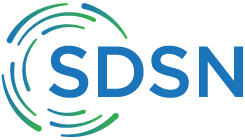Rationale and definition:
Multidimensional poverty assessments aim to measure the non-income based dimensions of poverty, to provide a more comprehensive assessment of the extent of poverty and deprivation. Several international multidimensional poverty tools exist, including the EU-2020 official poverty measure (combining income, work, and material deprivation), UNDP’s MPI (a headline index summarizing the proportion of people in poverty and the intensity of their poverty, which breaks down by indicator), the “Bristol” methodology to measure multidimensional poverty of children, UNICEF’s MODA (multidimensional poverty of children), and IFAD’s MPAT (10 separate indicators).
The Multidimensional Poverty Index (MPI) is published by the UNDP’s Human Development Report Office and tracks deprivation across three dimensions and 10 indicators: health (child mortality, nutrition), education (years of schooling, enrollment), and living standards (water, sanitation, electricity, cooking fuel, floor, assets).1 It first identifies which of these 10 deprivations each household experiences, then identifies households as poor if they suffer deprivations across one -third or more of the weighted indicators.2 Based on the Alkire Foster methodology, the MPI is created by multiplying together two numbers: the percentage of the population who are poor; and the average percentage of the weighted indicators that poor people experience (intensity). Including intensity provides an incentive to reach the poorest of the poor. The MPI reflects those in acute poverty; alternative cutoffs are used to report those who are vulnerable and those in severe poverty.
To ensure our conceptualization of multidimensional poverty is firmly rooted in the Open Working Group Outcome Document and proposed SDGs, we support the creation of a revised MPI. At a minimum this “MPI2015” would track extreme deprivation in nutrition, health, education, water, sanitation, clean cooking fuel, and reliable electricity, to show continuity with MDG priorities. More specifically it would reflect the following deprivations:
- Adult or child malnourishment
- Disrupted or curtailed schooling (a minimum of years 1-8)
- The absence of any household member who has completed 6 years of schooling
- Child mortality within the household within the last 5 years
- Lack of access to safe drinking water
- Lack of access to basic sanitation services
- Lack of access to clean cooking fuel
- Lack of basic modern assets (radio, TV, telephone, computer, bike, motorbike, etc.)
- Lack of access to reliable electricity
Potential additional indicators to reflect the SDGs include work; housing; violence; social protection; quality of schooling; health system functioning; teenage marriage or pregnancy; solid waste disposal; birth registration; internet access (as suggested by the MPPN3); farm assets and a household’s vulnerability to economic shocks and those posed by natural hazards (see MPAT’s dimensions4) and/or quality of work; and empowerment or psychological wellbeing (see OPHI’s Publications5).
Although it might seem preferable to determine multidimensional poverty based on deprivation in any indicator, previous MPIs have found considerable abnormalities in using only one deprivation, partly because of cultural and climactic diversity, and partly because the scale of these deprivations varies widely. Determining poverty levels in a country like India on the basis of any single deprivation would result in poverty rates above 90%, potentially obscuring the considerable progress that has been made in one or more areas and disincentivizing political action.6 We therefore propose using the Alkire and Foster method of calculation,7and setting a threshold of multiple deprivations,8 to determine who is or is not considered poor. Establishing the thresholds will require participatory discussions as well as expert consultation. Complementary National and Regional MPIs could also be designed for specific contexts, as Mexico, Columbia, Philippines, South Africa and Bhutan have done.9
Disaggregation:
An MPI based on the Alkire and Foster method has the potential to be disaggregated by both regions and groups.10 At present MPI is disaggregated by rural-urban for 106 countries, decomposed by 780 subnational regions, and by some ethnic groups. A linked measure assesses inequality among the poor. Although identification is at the household level, if the MPI is disaggregated by sex and age category it shows MPI affects women and children disproportionately.
Additional modules can be used to develop individual-level adult and child poverty measures.11 It is especially important to consider the multidimensional poverty of children to capture children’s experiences of poverty and their consequences.
Comments and limitations:
As a general rule, we recommend that the SDG indicator framework do not include any composite indices (see principles in section III), but we believe the MPI should be included for a number of reasons. The index provides the only comprehensive measure available for non-income poverty, which has become a critical underpinning of the SDGs. Critically the MPI comprises variables that are already reported under the Demographic Health Surveys (DHS) and Multi-Indicator Cluster Surveys (MICS), so it would not increase the statistical burden to NSOs or the international community.
Dependency on high-quality household survey data has its limitations. The number of countries producing such surveys has increased dramatically since the mid-1980s, to around 130 countries at present, but surveys remain irregular. Furthermore, many of the data for developed countries, such as the EU’s Statistics on Income and Living Conditions (available for 31 countries), are incompatible with data from developing countries, undermining our ability to prepare a global comparative measure.
Preliminary assessment of current data availability by
Friends of the Chair:
B
Primary data source:
This index relies fundamentally on household surveys. At present, the global MPI is based primarily on DHS and MICS, and also includes high quality national data with standardized indicator definitions.
Potential lead agency or agencies:
World Bank, UNSD, UNICEF, and UNDP.
UNDP (2013). Human Development Report 2013: The Rise of the South: Human Progress in a Diverse World. New York, NY: UNDP.
UNDP also classifies those having deprivations in 1/5 to 1/3 as vulnerable, and those deprived in ½ or more as in severe poverty.
See the indicators proposed in the Multidimensional Poverty Peer Network’s Light Survey proposal.
See IFAD website.
See OPHI website.
Alkire, S. and G. Robles (2014). “Identifying the multidimensionally poor: some considerations.”
Alkire, S. and J. Foster (2011). “Counting and Multidimensional Poverty measurement.” The Journal of Public Economics 95(7–8), 476–487. Alkire, S. and A. Sumner (2013). Multidimensional Poverty and the Post-2015 MDGs. OPHI Briefing Note.
Alternative cutoffs will be reported, as UNDP’s HDRs do for MPI, and the World Bank does for $1.25.
See examples of national level application here: CEPAL’s Regional MPI for Latin America (forthcoming).
Alkire, S. and A. Sumner (2013).
For an example of a child poverty measure see Alkire, S. and J.M. Roche (2012). “Beyond Headcount: Measures that Reflect the Breadth and Components of Child Poverty”. In Alberto Minujin and Shailen Nandy, eds. Global Child Poverty and Well-Being: Measurement, Concepts, Policy and Action. Bristol: The Policy Press. For a gendered measure see S. Alkire, M. Apablaza, and E. Jung (2014). “Multidimensional Poverty Measurement for EU-SILC Countries.” OPHI Research in Progress 36d.

